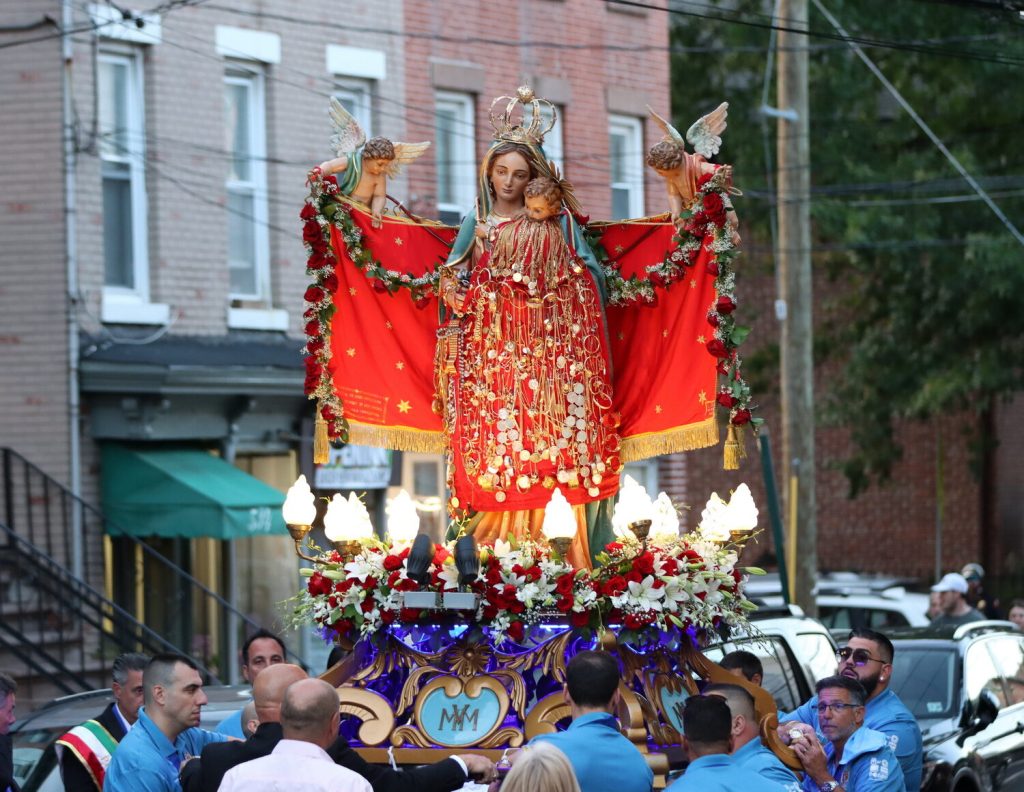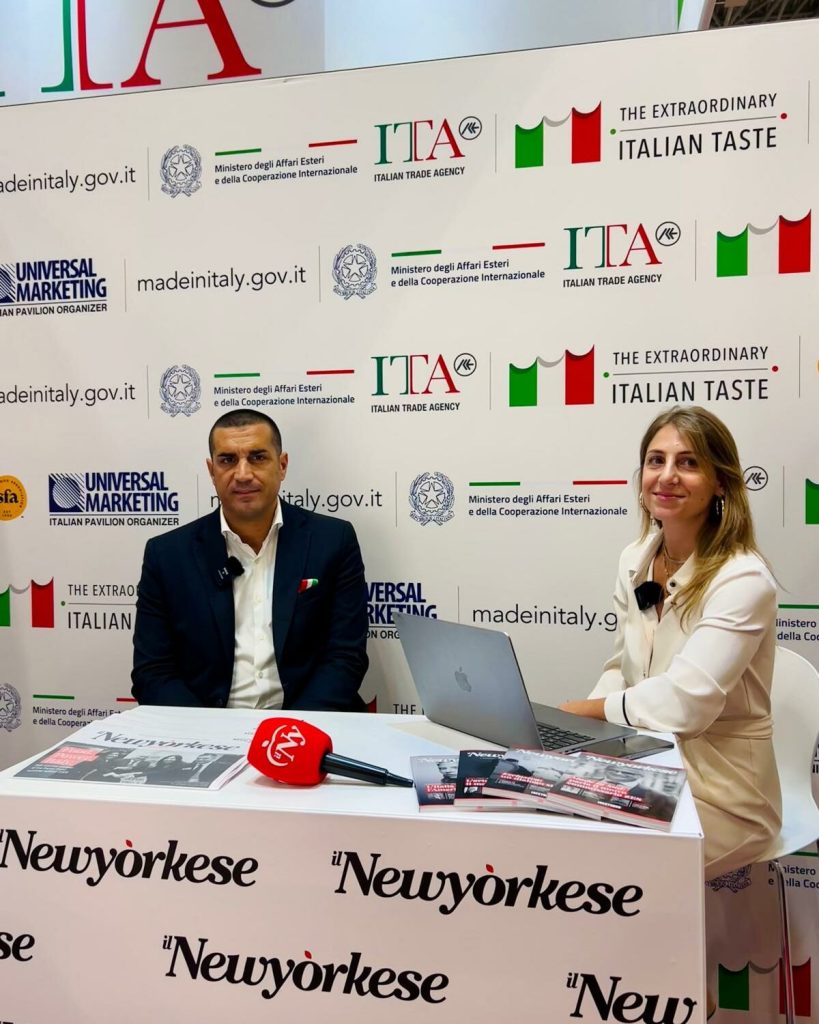The festive air returned to fill the streets on Hoboken’s riverfront for the ninety-ninth Hoboken Italian Festival, dedicated to Our Lady of Martyrs. After days of uncertainty related to bad weather, even the most awaited procession, that of the Marian simulacrum, was able to take place without waiver, crossing the city amidst a backdrop of singing, devotion and applause from those present.
The excitement of the faithful, who for a moment feared they would have to forego the central moment of the celebration, resulted in a long applause as the statue, adorned with flowers and lights, began its journey from the churchyard of St. Francis Church. “It was unthinkable not to see it come out, even though the rain had us worried,” confided a woman from the Italian-American community, clutching a rosary in her hand.
The festival is much more than a religious festival: it represents the identity core of the Molfettese community that has emigrated to the United States. Since World War II, Hoboken has been one of the main centers of Apulian emigration, and Our Lady of Martyrs has accompanied this symbolic journey, transforming itself into cultural glue and collective memory. Every September, the city is dressed in the colors and traditions of the patronal festivals of southern Italy, recreating an atmosphere that weaves together faith and nostalgia.
Among the most anticipated musical events of this edition was the return of the Diolovuole Band, one of the most relevant realities of Italian Christian Music. Composed of sixteen musicians and led by Pax Minuto, author and composer, the formation offered a repertoire composed of modern arrangements and lyrics inspired by the spirituality of Don Tonino Bello, a bishop from Puglia who left a strong social and cultural legacy.
The band, which had already thrilled the audience at last year’s 98th edition, renewed the Hoboken connection in front of a warm audience. Some of the best-known songs from the album Peripheries made the audience sing and move, with lyrics about dignity, hope and caring for the last ones. Songs such as Invisibili and Collocazione provvisoria, which online have reached millions of listens, found new strength in the context of the festival, transforming the concert into a moment of collective reflection.
The illuminations, installed along the streets and waterfront, helped give the festival the character of a scenic event. These are the typical carved wooden structures adorned with colored bulbs that arrived in Hoboken in 2015 thanks to cultural initiatives that sought to recreate, overseas, the splendor of Puglia’s patronal festivals. For many emigrants, seeing them lit up means finding a piece of home thousands of miles away.
Alongside the spiritual side, the festival has the flavor of a great folk festival: stalls with Italian products, musical performances, fireworks over the Hudson River, and meetings between generations. Young people who grew up in Hoboken tell of how their grandparents handed down this tradition to them, making them custodians of a history that does not want to be interrupted. Many speak of pride rather than just belonging-a celebration that makes them feel part of a larger community.
The value of this event also lies in its role of continuity. In the 1980s, when many Italian traditions seemed destined to fade into the second generations, the Our Lady of the Martyrs Society of Hoboken kept the festival alive, adapting it to the times but without giving up the main symbols. For this reason, now in its 99th year, the procession keeps its original meaning intact, still managing to involve thousands of people.
The postponement of a few hours due to rain did not affect participation: the faithful waited patiently, showing how unmissable the procession was. Some children followed their parents among the zeppole and panzerotti stands, while the band played religious marches alternating with popular songs-a mixture that well describes the spirit of the festival. With its eyes already on next year’s centennial, Hoboken is preparing to celebrate a century of tradition that unites Italy and America in one long embrace.
The article The 99th Feast of Our Lady of Martyrs ended with a concert by the Diolovuole Band comes from TheNewyorker.



